|
|
|
|
|
 |
VPN Client Installation for Windows 2000 (Manual Install)
The installation procedure assumes that you have the following:
- You are connected to the Internet via an Ethernet adapter or have a supported modem installed.
- TCP/IP is installed.
- You have an account with an Internet Service Provider (ISP)
- You have read and agreed with the Usage Restrictions for the VPN
1. Log on to your Windows 2000 computer as Administrator.
2. Right-click on the icon My Network Places located on your desktop, and select Properties.
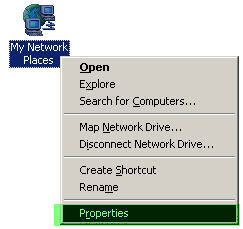
3. Double-click the Make New Connection icon  , this will start the Network Connection Wizard. , this will start the Network Connection Wizard.
4. Once the Network Connection Wizard launches, select the Next button located at the bottom of the screen.
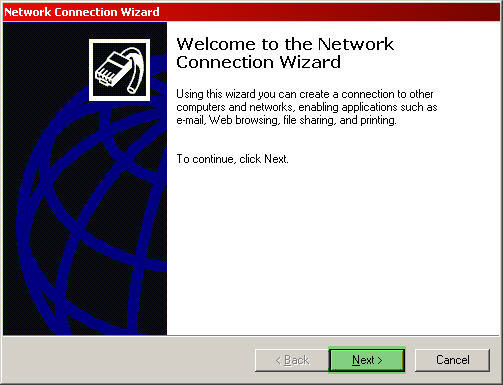
5. The Network Connection Type box is displayed. Select Connect to a private network through the internet, and click the Next button located at the bottom on the screen.
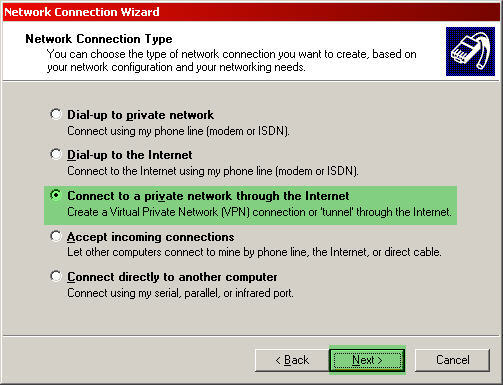
5a [it is possible that this option will not be displayed]. If you are connecting to the VPN service through a Dial-up ISP you should select the ISP from the Automatically dial the initial connection pull down list, and click the Next button located at the bottom on the screen.
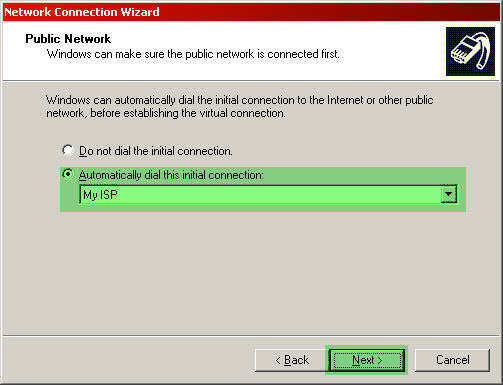
5b [it is possible that this option will not be displayed]. If you are connecting to the VPN service through an existing ethernet connection you should choose the Do not dial the initial connection option and then the Next button located at the bottom on the screen.
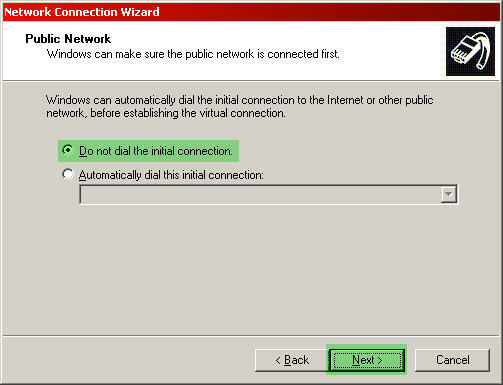
6. The Destination Address will now need to be specified. In the field provided for the host name enter vpn1.homepage100.com and select the Next button located at the bottom of the screen.
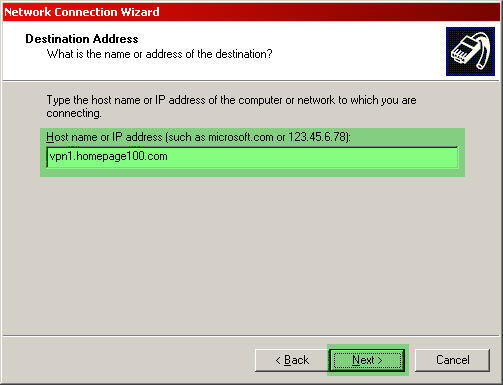
6a [this option will only be displayed if you have an ethernet adapter]. It is possible to share your VPN connection with other users on your local network. This option is not supported by our VPN service and you should simply leave the options in this dialog unchecked and choose the Next button located at the bottom of the screen.
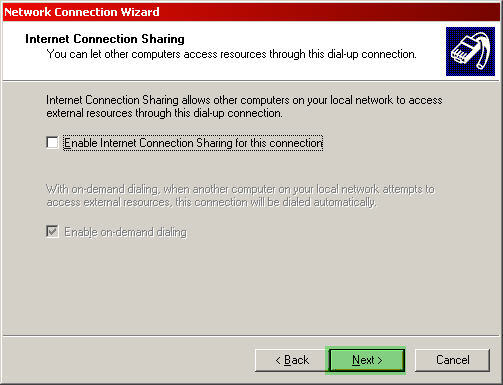
7. You will now need to make this connection available to For all users.
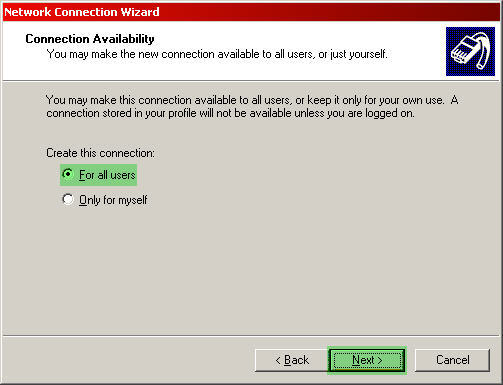
8. You will now need to type a name for your VPN connection; enter Silverland VPN in the field provided. Select the option Add a shortcut to my desktop located at the bottom of the screen. Select the Finish button located at the bottom of the screen.
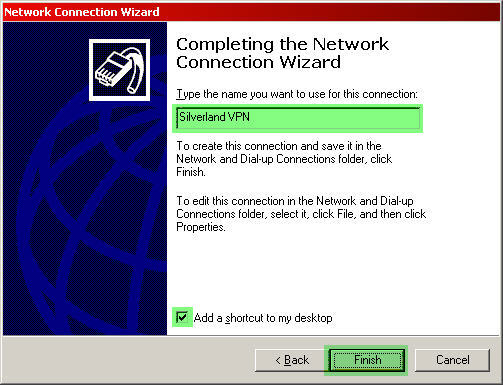
9. You have now reached the end of the main configuration wizard. There are a few other options that need to be enabled to allow the connection to the VPN service to work. Double-click on the desktop Silverland VPN icon you just created and select the Properties button.
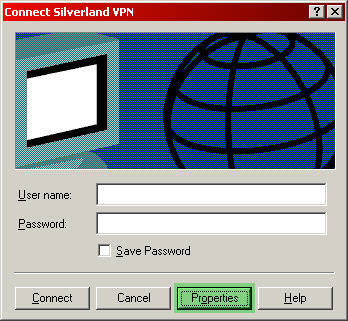
10. You will need to select the Options tab. Because the Internet is sometimes slow and unresponsive it is possible that the connection to the VPN service will be lost from time to time. If you are connected to the Internet via a LAN connection you may also wish to tick the Redial if line is dropped. Next click the Networking tab.
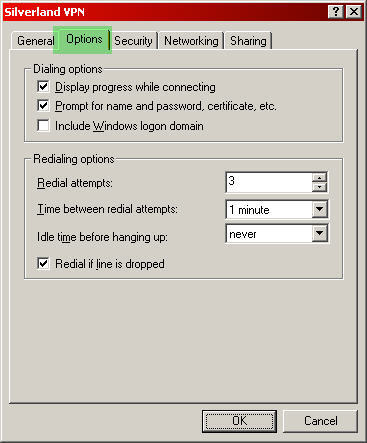
11. From the Networking tab, make sure Internet Protocol (TCP/IP) is highlighted and click Properties.
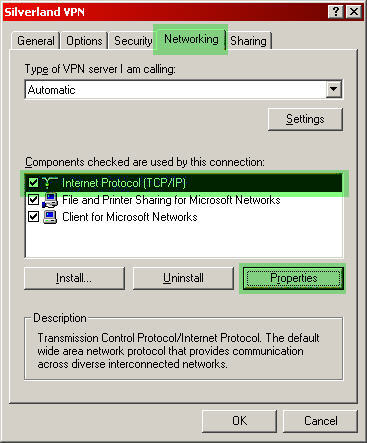
12. In the Internet Protocol (TCP/IP) Properties window, select Use the following DNS server addresses and enter 192.168.10.2 for the Preferred DNS server and 202.64.37.166 for the Alternate DNS server. Next click the Advanced... button.
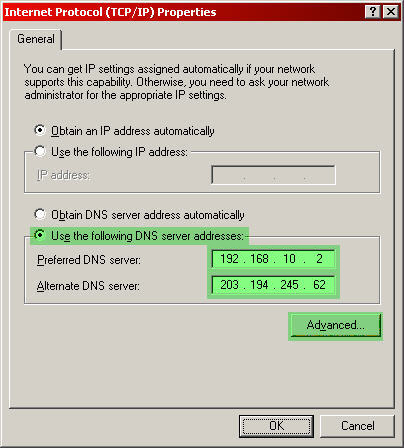
13. In the General tab under the Advanced TCP/IP Settings window, make sure Use default gateway on remote network is checked. If this is not checked, all internet traffic from your computer will not route through our VPN server. Next click OK. Click OK again for the Internet Protocol (TCP/IP) Properties window and finally OK for the Silverland VPN Properties window.
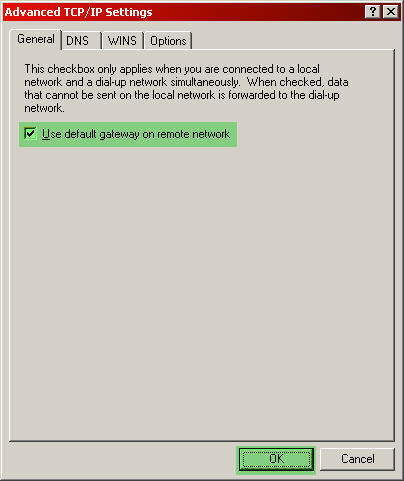
14. You are now ready to connect to the Silverland VPN service. You will need to enter your User name and Password in the field provided. Click the Connect button located at the bottom of the screen.
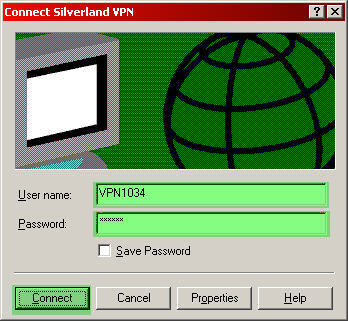
Note: If you are using your own computer and wish to save the user name and password for subsequent connections, check Save Password. However, if you are using a public computer, we STRONGLY advise you NOT to check this option as other users will be able to gain access to your VPN account.
15. Once you've successfully connected to our VPN Service you will see a network icon in the taskbar.

To disconnect from our VPN service at any time simply Right Click on the network icon in the taskbar and choose the Disconnect option.

Troubleshooting / FAQ:
We have gathered a list of known issues and problems associated with the VPN
alternatively you can e-mail our Support Desk
Click here to obtain a PDF version of this documentation.
|
|
|
 |
|
|
|
|
|
|
|
|
|
|
|